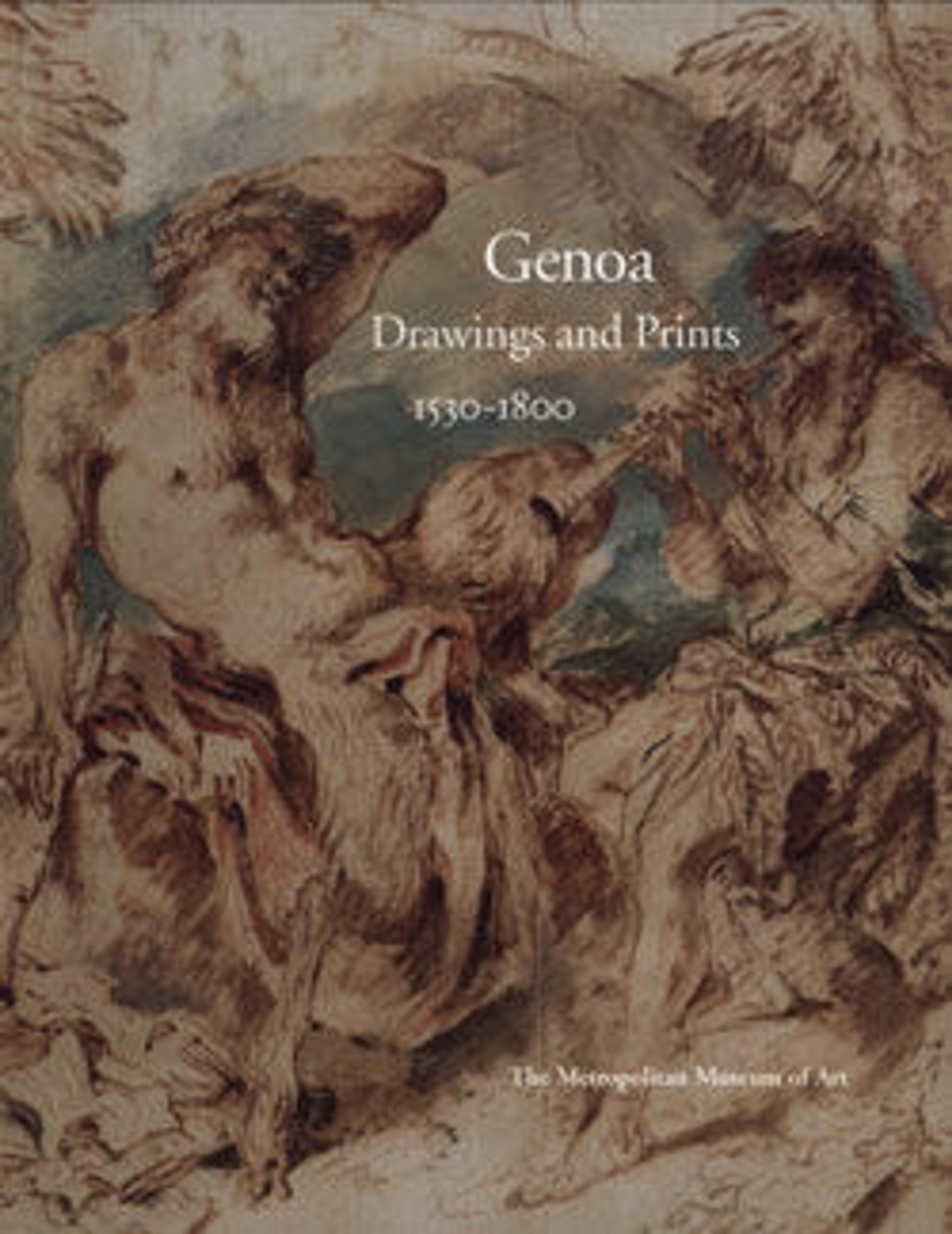Ceiling Design with the Presentation in the Temple
Gregorio de Ferrari's virtuosity as a designer of illusionistic fresco paintings can be appreciated with particular immediacy in his numerous extant compositional drawings. Their mastery of perspective and architecture were particularly admired by his contemporaries (see Soprani-Ratti 1768-69, vol. 2, p. 115).
As in the present drawing, the artist often projected his figural narratives in steep 'sotto in su' (seen from below) perspective, framing them with delightful fictive architectural detailing. Mary L. Myers attributed the Metropolitan Museum's sheet to Gregorio (New York 1975, no. 22), an attribution reinforced by a related drawing in the print room of the Palazzo Rosso, Genoa (inv. no. 2130), which is drawn in the same medium and depicts another Marian subject, the Immaculate Conception (Newcome 1973-74, pp. 82-83; Gruitrooy 1987, pp. 431-32, 458-59). Both figural designs are set within irregular fields, punctuated at the corners with richly embellished pendentives spanning a grated, arched window, and share a theatrical exuberance of light and linear rhythm.
Before coming to Genoa, the city which became his home and which he greatly enriched with his art, Gregorio de Ferrari immersed himself in the works of Correggio in Parma, where he lived for several years. It is often noted that his study of Correggio was decisive for his development of an exuberant lyricism, bravura effects of light and color, and sweeping, rhythmic compositions. These qualities identify the author of this formerly anonymous drawing as Gregorio.
(Carmen C. Bambach)
As in the present drawing, the artist often projected his figural narratives in steep 'sotto in su' (seen from below) perspective, framing them with delightful fictive architectural detailing. Mary L. Myers attributed the Metropolitan Museum's sheet to Gregorio (New York 1975, no. 22), an attribution reinforced by a related drawing in the print room of the Palazzo Rosso, Genoa (inv. no. 2130), which is drawn in the same medium and depicts another Marian subject, the Immaculate Conception (Newcome 1973-74, pp. 82-83; Gruitrooy 1987, pp. 431-32, 458-59). Both figural designs are set within irregular fields, punctuated at the corners with richly embellished pendentives spanning a grated, arched window, and share a theatrical exuberance of light and linear rhythm.
Before coming to Genoa, the city which became his home and which he greatly enriched with his art, Gregorio de Ferrari immersed himself in the works of Correggio in Parma, where he lived for several years. It is often noted that his study of Correggio was decisive for his development of an exuberant lyricism, bravura effects of light and color, and sweeping, rhythmic compositions. These qualities identify the author of this formerly anonymous drawing as Gregorio.
(Carmen C. Bambach)
Artwork Details
- Title:Ceiling Design with the Presentation in the Temple
- Artist:Gregorio de' Ferrari (Italian, Porto Maurizio 1647–1726 Genoa)
- Date:1647–1726
- Medium:Pen and brown ink, brush and brown wash, highlighted with white, over traces of black chalk, on blue-gray paper
- Dimensions:20-3/4 x 16-1/4 in. (52.7 x 41.3 cm)
- Classification:Drawings
- Credit Line:The Elisha Whittelsey Collection, The Elisha Whittelsey Fund, 1955
- Object Number:55.628.8
- Curatorial Department: Drawings and Prints
More Artwork
Research Resources
The Met provides unparalleled resources for research and welcomes an international community of students and scholars. The Met's Open Access API is where creators and researchers can connect to the The Met collection. Open Access data and public domain images are available for unrestricted commercial and noncommercial use without permission or fee.
To request images under copyright and other restrictions, please use this Image Request form.
Feedback
We continue to research and examine historical and cultural context for objects in The Met collection. If you have comments or questions about this object record, please contact us using the form below. The Museum looks forward to receiving your comments.
